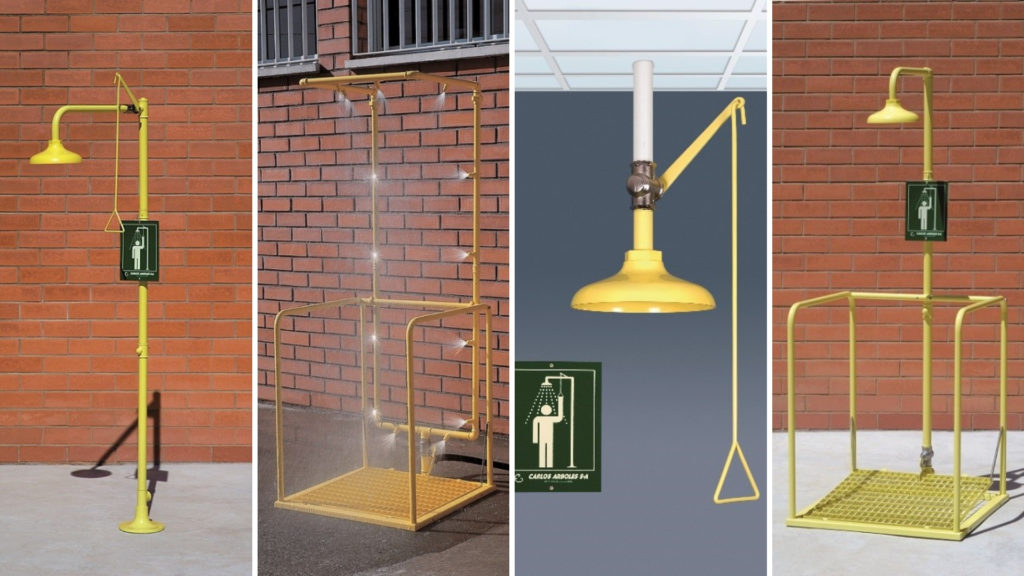Types Of Emergency Shower

If you are in the process of making a commercial, industrial or educational workplace safe for the individuals who work or study there, learning about emergency showers is important.
Chances are, if substances hazardous to human and environmental health are used in these places, you’ll have heard of COSHH and their requirements to have emergency showers and eye washes in place in case of a chemical spill or accident involving a worker.
We’re here to offer an overview of the types of emergency showers out there and how they work.
What is an emergency shower?
Emergency showers provide on the spot decontamination for anyone who has been involved in an accident that has resulted in any part of their body coming into contact with hazardous chemicals.
According to COSSH, the government’s health and safety regulations, emergency showers are essential equipment for labs, construction sites, factories, chemical plants and anywhere where hazardous substances are used.
Emergency showers are designed to wash the individual’s head and body with large volumes of water, flushing the chemicals away from the body, thereby mitigating the effects of damage caused by exposure to these substances
How to use an emergency shower
From the moment a corrosive chemical meets skin, it causes tissue damage that gets more serious with every second that passes. That’s why getting to the shower ASAP should be every individual’s main priority.
| Step 1 | Make your way to the safety shower as quickly and safely as possible and enter immediately.
|
| Step 2 | Pull the lever and go under the stream of water, even if it isn’t running clear yet.
|
| Step 3 | Remove all clothing and jewellery as you wash. Whether you are surrounded by strangers and colleagues or not, removing all items is essential for ensuring that there is nothing for the substance to cling on to.
|
| Step 4 | Stay under the stream of water for at least 15 minutes or until medical help arrives.
|
Where should an emergency shower be installed?
In broad terms, emergency showers should be in places that are visible and easy to reach. More specifically, they should be reachable within 10 seconds and directly adjacent from areas where corrosive chemicals are being handled.
Types of emergency showers
Ceiling mounted shower
Ceiling mounted showers operate with a pull rod and should be installed at a height between 210cm and 230cm above where the user will stand. One of the benefits of a ceiling mounted shower is that it is space saving.
Floor mounted shower
Floor mounted showers are ideal for outdoor use, they operate with a foot paddle and can be manufactured with or without an eyewash.
Platform operated shower
Platform operated showers are ideally used in workplaces where floors are dirty or slippery. Platforms are made of galvanised steel and designed with grip in mind. The platform operated shower can be available with or without an eyewash and its greatest feature is that it turns on automatically as the user steps onto the platform.
Wall mounted shower
Wall mounted showers, like ceiling mounted showers, are space saving and operate with a pull handle. Unlike a ceiling mounted shower, they can be mounted on a wall both indoors and outdoors.
Platform Operated Booth
The platform operated decontamination booth is the most effective of its kind, thanks to its 14 spray heads placed to provide full body coverage. Like the platform operated shower, the platform operated booth also turns on as the user steps onto the platform. This is also the most time effective shower in case of an emergency.
